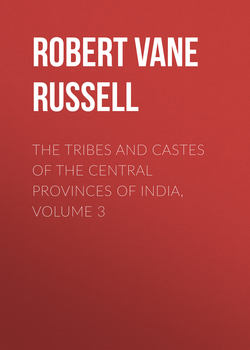Читать книгу The Tribes and Castes of the Central Provinces of India, Volume 3 - Robert Vane Russell - Страница 20
Gond
(a) Origin and History
2. Gondwāna
ОглавлениеIn the Central Provinces the Gonds occupy two main tracts. The first is the wide belt of broken hill and forest country in the centre of the Province, which forms the Satpūra plateau, and is mainly comprised in the Chhindwārā, Betūl, Seoni and Mandla Districts, with portions of several others adjoining them. And the second is the still wider and more inaccessible mass of hill ranges extending south of the Chhattīsgarh plain, and south-west down to the Godāvari, which includes portions of the three Chhattīsgarh Districts, the Bastar and Kanker States, and a great part of Chānda. In Mandla the Gonds form nearly half the population, and in Bastar about two-thirds. There is, however, no District or State of the Province which does not contain some Gonds, and it is both on account of their numbers and the fact that Gond dynasties possessed a great part of its area that the territory of the Central Provinces was formerly known as Gondwāna, or the country of the Gonds.37 The existing importance of the Central Provinces dates from recent years, for so late as 1853 it was stated before the Royal Asiatic Society that “at present the Gondwāna highlands and jungles comprise such a large tract of unexplored country that they form quite an oasis in our maps.” So much of this lately unexplored country as is British territory is now fairly well served by railways, traversed almost throughout by good roads, and provided with village schools at distances of five to ten miles apart, even in the wilder tracts.
Gond women grinding corn
37
The country of Gondwāna properly included the Satpūra plateau and a section of the Nāgpur plain and Nerbudda valley to the south and west.
